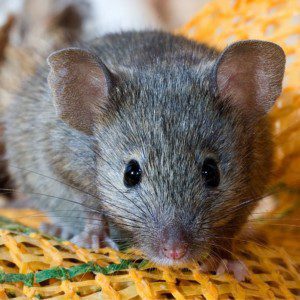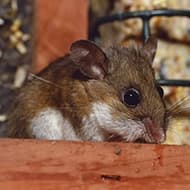
Rodents are a year-round nuisance to Long Island homeowners; this time of year, you’ll notice an increase in rodent activity as these furry critters seek out their basic winter needs: food, water, and warm shelter. We’re covering the three primary rodents you may potentially find in your Long Island home, plus some tips for rodent proofing your property to prevent any fall or winter rodent problems.
What Types of Rodents Are on Long Island?
On Long Island, mice and rats are common. Here are the main species that could end up in your own home:
House Mouse 
You’ve probably encountered these before; house mice are small rodents that are very common in Long Island homes.
House mice have gray, brown, or black fur, a lighter cream or tan-colored underside, and dark, beady eyes. Size-wise, when we say small, we mean it; house mice range from 5.5-7 inches in length, counting their velvety, fur-colored tails.
Signs of House Mice
House mice are commensal rodents; this means they’re reliant in some way on humans for either food, water, or shelter. As temperatures drop in the fall and winter, mice will seek out warm shelter, whether that’s in a toasty house or commercial building where people can be found.
Once inside, the key signs house mice will leave behind include:
- Dark, rod-shaped droppings which are pointed at both ends
- Visual evidence of nesting behind walls, in attics, basements, crawlspaces, or behind large appliances
- Chewed wires, pipes, insulation, flooring, or drywall
- Damaged pictures, furniture, clothing, or other personal items
Deer Mouse 
Deer mice are another common species of mouse Long Islanders often see show up in their homes this time of year. Deer mice are slightly smaller than house mice, brown in color on their bodies, and with white bellies and feet. They are aptly named deer mice because their fur pattern is similar to that of deer, they’re able to run quickly, and they have agile jumping skills.
Signs of Deer Mice
Deer mice are less of a threat inside the home than house mice, though it’s still possible they’ll make their way inside.
Here’s what to look for:
- Signs of nesting behind walls and inside attics or chimneys
- Chewed electrical wires or wooden structures
- Destroyed gardens or landscaping
- Food or food prep areas contaminated by urine or feces
Norway Rat 
The largest of the Long Island rodent bunch, the Norway rat has a body around 7-9.5 inches, plus a tail that adds an additional 6-8 inches to its length. Norway rats have blunt noses, small noses, and beady little eyes. On top, their fur is coarse, brown, and scattered with black hair; on their undersides, they have lighter white-colored fur.
Signs of Norway Rats
Because they have poor vision and climbing skills, Norway rats are most often found on the ground levels of Long Island homes, in close proximity to food sources like meats, dry cereals, and dry pet foods.
If you have Norway rats, you may see:
- Greasy “runway” marks their fur leaves behind along walls
- Droppings that are larger in size, brown, and blunt on both ends
- Major chewing damage to pipes, flooring, drywall, or personal items in your home
- Contaminated food or food prep areas with urine and feces
How Do Rodents Get in the House?
Rodents like mice and rats need very little clearance to get inside your house. Mice, for example, need a space roughly the size of a dime in order to squeeze inside; rats, on the other hand, need clearance about the size of a quarter! Because of this, they may enter through gaps or cracks, via sewer lines, drains, holes that have developed in your home or its foundation over the years, or through open or damaged windows or doors.
How to Rodent Proof Your Home
When it comes to preventing mice and rats from getting inside your Long Island home this fall and winter, there are several ways to make it happen.
- Suburban Exterminating’s home pest control services—rodents are covered!
- Pest-proof your home with basic home maintenance to knock out any vulnerabilities such as damaged screens, gaps or cracks in your home’s structure, etc.
- Eliminate food sources such as pet food, open trash cans, or dropped crumbs
- Keep firewood and debris stored away from your home
- Keep your food stored in sealed containers
- Close any openings in your home, such as garages, pet doors, or chimneys
Rat and Mice Control on Long Island
Protect your home from rats and mice year-round with Suburban Exterminating’s home pest control services. Call (631/516) 864-6900 to schedule a free estimate.







